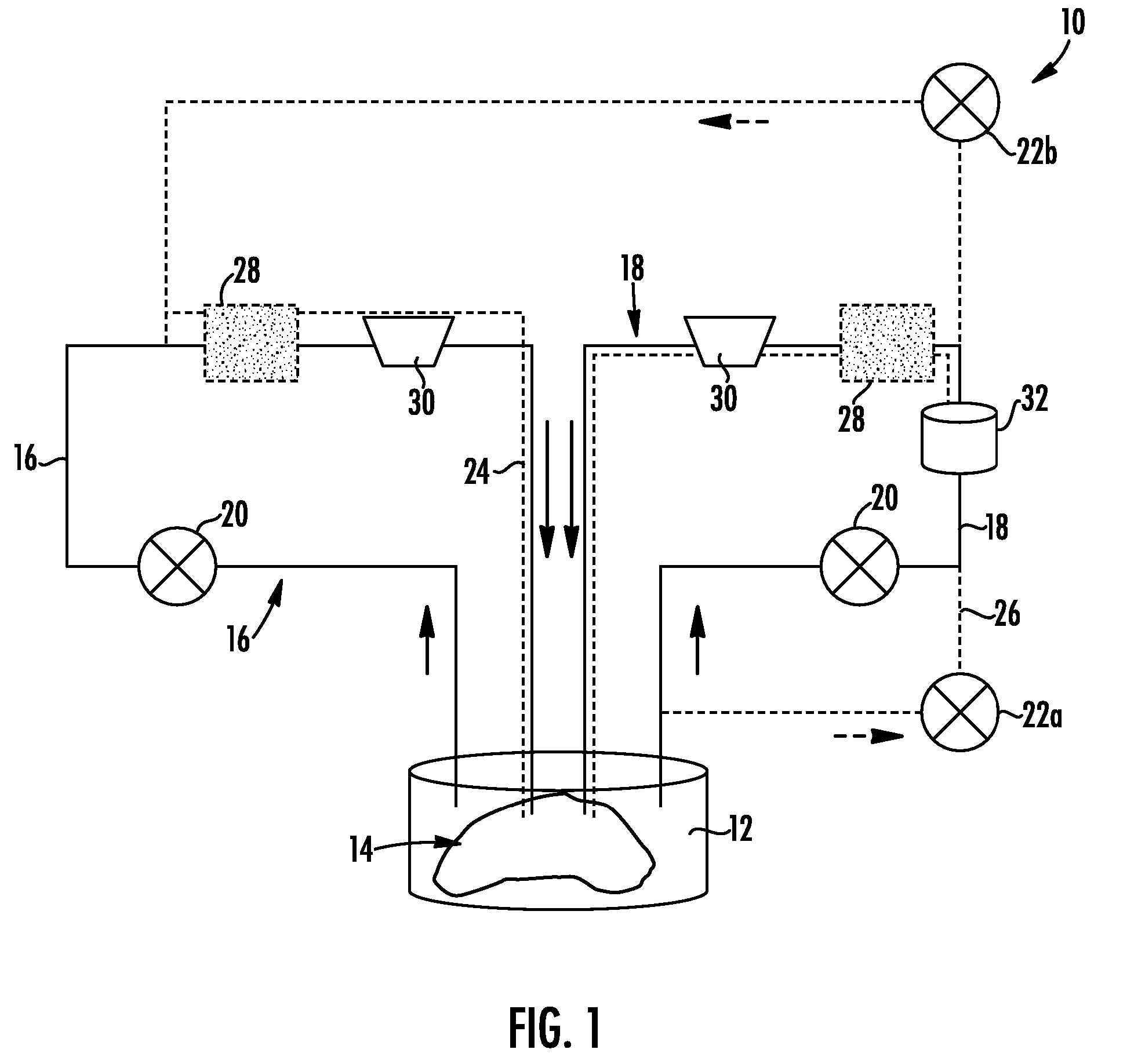Composition and Method for the Restoration and Preservation of Transplant Organs Procured from DCD Donors
a transplant organ and preservation method technology, applied in the field of methods and solutions for preserving organs for transplantation, can solve the problems of long wait list, lack of available organs for transplantation, shortening of organs, etc., and achieve the effects of improving preservation, organ viability, and recovering organs
- Summary
- Abstract
- Description
- Claims
- Application Information
AI Technical Summary
Benefits of technology
Problems solved by technology
Method used
Image
Examples
example 1
[0036] A perfusion solution having the following composition was prepared by 1) preparing a liter of UW solution, available from DuPont under the tradename Viaspan™, in which the starch and gluthione were omitted. The solution was filtered and stored at 4° C. 2) A second stock solution comprising of 0.2 mM OKY46 thromboxane A2 inhibitor, available from Calbiochem in DMSO was prepared and stored at −20° C. 3) The following ingredients were then added to the UW solution prepared in step 1).
Glycine5mMTrolox C200μMN-acetyl L-cysteine5mMDesferal (Deferoxamine)0.25mML-Glutamine2mMGlucose5.5mMCaCl21mML-Glutathione3mM
1 mL of the stock solution prepared in step 2) was added to the modified UW solution with strirring for about 5 minutes. The pH of the solution was adjusted to 7.4 using 4:1 ratio of 5M-KOH and 5M NaOH. The resulting solution was stored at 4° C. unit use.
PUM
 Login to View More
Login to View More Abstract
Description
Claims
Application Information
 Login to View More
Login to View More - R&D
- Intellectual Property
- Life Sciences
- Materials
- Tech Scout
- Unparalleled Data Quality
- Higher Quality Content
- 60% Fewer Hallucinations
Browse by: Latest US Patents, China's latest patents, Technical Efficacy Thesaurus, Application Domain, Technology Topic, Popular Technical Reports.
© 2025 PatSnap. All rights reserved.Legal|Privacy policy|Modern Slavery Act Transparency Statement|Sitemap|About US| Contact US: help@patsnap.com

